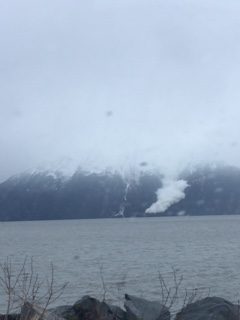Turnagain Pass
|
|
The avalanche danger is MODERATE above 1000′. Human triggered wind slabs and cornice falls remain possible on steep leeward slopes and gullies. Look for signs of obvious wind effect and choose terrain carefully.
***There is virtually no snow below 1000′. However, there have been a two reported natural avalanches since Friday that have run from the Alpine to sea level in channeled terrain. This is not expected today but important to keep in mind when using summer hiking trails with overhead hazard.
Tonight! Join CNFAIC Forecaster Aleph Johnston-Bloom at Blue & Gold Boardshop from 7:00-8:30 for a FREE evening avalanche discussion on patterns in Alaskan avalanche accidents with practical takeaways to use this season. There will also be an avalanche gear demo outside in the snow (weather permitting).




